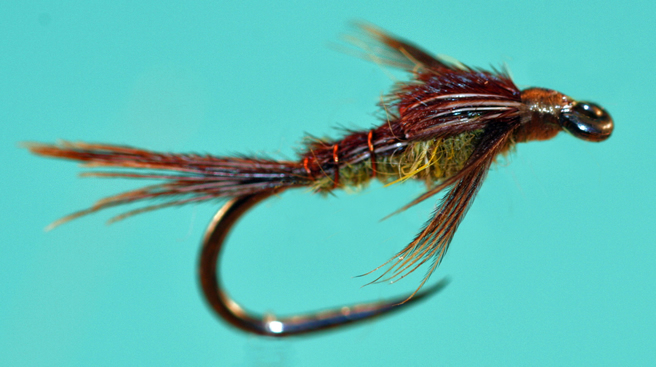Page 1 of 1
Clever technique.
Posted: Fri Feb 25, 2011 5:04 pm
by daringduffer
This is a clever technique that is adaptable for soft hackles:
http://www.riseformstudio.tv/jbug.html

dd
Re: Clever technique.
Posted: Fri Feb 25, 2011 6:39 pm
by William Anderson
dd, nice fly. This nymph style was published about ten years ago in a great nymph tying book by Jim Schollmeyer in 2001.
http://www.amazon.com/Nymph-Fly-Tying-T ... 1571882669 At least that's the first time I saw it, and I'm not sure if he cites someone else for the design or not. Such a cool technique because the pheasant plays the starring role as tail, back, wingcase and legs. I've tied this method of nymph for several species and it's a great pattern. The contrast between the back and belly seems to suggest a food item and matches some nymph naturals.
I can see it on an emerger style hook or scud hook where there is a clear top and bottom of the fly. I would be curious to see a soft-hackle pattern using this technique. maybe even something other than pheasant, like ostrich. It seems that the presumption for many softhackles is that the flies are tied "in the round" as I've heard it described. I see an argument being made for this nymph body tied with a softhackle collar.
w
Re: Clever technique.
Posted: Fri Feb 25, 2011 7:43 pm
by hankaye
Howdy All;
Watched the video, they didn't appear to mention the number of Pheas. tail fibers (is that the correct name?), that were used.
What's a good number of them to make this one?
hank
Re: Clever technique.
Posted: Fri Feb 25, 2011 8:11 pm
by Jerry G
Hank the size of the fly is going to dictate the number of pheasant tail barbs used. Allow the pics shown to sort of guide you as to appearance.
Regards, Jerry
Re: Clever technique.
Posted: Sat Feb 26, 2011 3:37 am
by Otter
I tied up a few using this technique a few years ago.
I never caught a single fish on them, might be something to do with never actually getting around to tying them to a leader.

Re: Clever technique.
Posted: Sat Feb 26, 2011 10:29 am
by letumgo
Hank - Start with five or six pheasant tail fibers and adjust the number up or down to suit the size of fly your tying. You can always trim a couple fibers out later to make the tail smaller, yet have enough to cover the back of the fly. Skip Morris uses a similar technique for his "Skip Nymph" patterns. I think Skip's method is a little easier, yielding similar results. I've used the Morris technique a lot.
http://www.amazon.com/Morris-Tying-Flie ... 87&sr=1-10
http://www.youtube.com/watch?v=o-ji8pNuDK0
http://www.skip-morris-fly-tying.com/ha ... nymph.html
Re: Clever technique.
Posted: Mon Feb 28, 2011 10:33 pm
by willowhead
i watched the Rise Form Studio video and it's pretty good, although there is nothin' new there at all. All techniques demonstrated have been around for quite some time. An old friend of mine John Collins, (who used to be a partner in Rise Form Studio) has been doin' flies like that for years.
i have the Schollmeyer book and it's is GREAT! Now, to go see the Skip Morris videos.

WOW! now THAT (the Sparkle version), had something new in it. New to me anyway.........that was cool. Skip is a very nice person. i gotta try tyin' that fly.



